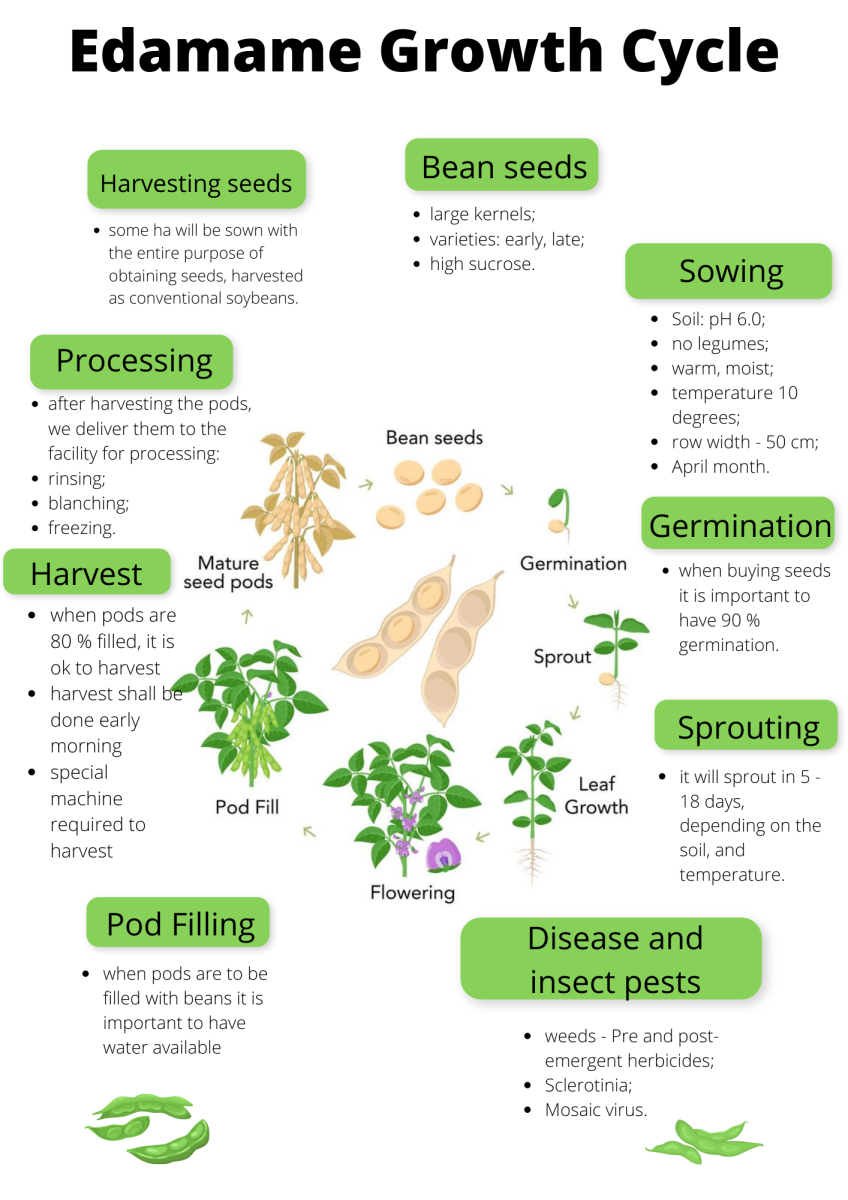Growing Process
One of the main difference between Edamame and grain soya beans rests in the seed used to grow them. As a legume species and self-fertilizing crop, Edamame is a perfect flowering plant, in that, its flowers contain both male and female reproductive organs. There are special Edamame varieties or cultivars. The Edamame seeds have large kernels, good taste, different colors, and very important - high sucrose. Many varieties from Japan and Taiwan were tried here in Europe and now we can buy seeds locally.
The ideal soil pH for Edamame is 6.0 and it should be sowed in a field where no legumes have been previously grown. It is recommended Rhizobia inoculation at the rate of 10 g/ka of seed to boost nitrogen fixation. With soybean being a legume, it transfers the atmospheric nitrogen into the soil and does not require as much fertilizer while improving the fertility of the land.
The seeds need to be sown in 2.5 – 5.0 cm depth, in well-drained, warm, moist fertile soils. As planting depth increases, soybean seedling emergence declines. Soybean germination will be better if seeds are planted into moist soil.
The best time to sow occurs between April and June, when the soil gets very warm for the very first time (the standard point of reference is 12 degrees at a depth of 4-8 cm). The row width is variable depending on the available hoeing technology and harvester; the standard should be 50 cm.
After sowing, it is important to control weed, irrigate and pest management. Due to the lower density of the crop and slower development of seedlings, Edamame requires more care than dry soya. Poor weed control, resulting from limited herbicide availability and undeveloped integrated weed management systems, is a major hurdle to production of vegetable soybean on a commercial scale.
Edamame has high water requirements in all development stages. Insufficient irrigation causes aborted blossoms, small pods, and shriveled beans, thus greatly reducing the yield. Apart from the water requirements for the germination of their large seeds, Edamame need little moisture when young. There should be no drought during flowering, however, otherwise too many fruit sets will be lost.
The range of disease and insect pests affecting Edamame is similar to those affecting grain soybeans. Because Edamame is harvested when green, we will be able to avoid many of the late-season problems that occur on traditional soybeans. Early season diseases, such as seed decay, seedling blights and root rots will reduce stands but are generally more problematic in wet, poorly drained soils.
Harvesting takes place at the R6 stage when the pods are approximately 80-90 % filled and have a bright green color, and this is approximately 90 – 100 days after sowing. If they are starting to be yellow, the quality is not good for selling. Nowadays the harvesting can be done only mechanical because of labor force shortage. Edamame has a very short window for harvesting.

